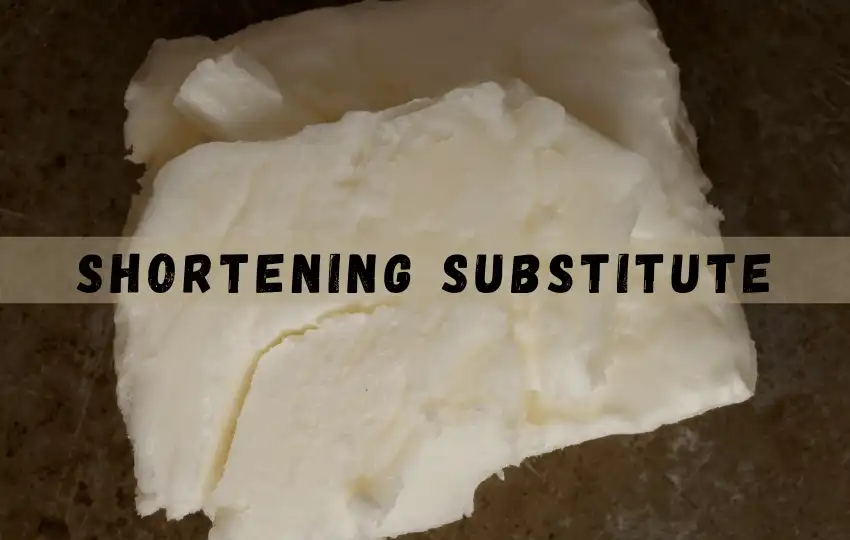As a home chef, you may have come across a recipe that calls for shortening. Shortening is a type of fat that adds richness and texture to baked goods.
However, what do you do if you don’t have any shortening on hand or you are trying to avoid it for health reasons?
Don’t worry because there are alternative ingredients that you can use as a shortening substitute and yield the same result.
This blog post will explore 12 ideal shortening substitutes with ratios and how to use the alternatives, perfect for a cook who needs a quick substitution with measurements.
In short, " What can I use instead of shortening?" Butter, Coconut Oil, Yogurt, Sour Cream, Lard, Margarine, Applesauce, Greek Yogurt, Vegetable Oil, Nut Butters, Avocado, and Cream cheese.
What is shortening, and what does shortening taste like?
Shortening is a type of fat utilized in cooking and baking. It usually refers to vegetable shortening, which has a flavorless, waxy texture that is solid at room temperature.
Shortening can also refer to animal fats such as lard or butter, but these are less commonly used.
In terms of taste, shortening has virtually no flavor; it does not impart any strong taste to food unless combined with other ingredients.
In baking, however, the presence of even small amounts of shortening can cause noticeable changes in texture and flakiness.
Uses of shortening
Shortening is a common ingredient used in baking and cooking. By definition, it is a fat that is solid at room temperature and derived from either vegetable or animal sources.
It is most commonly used to provide texture and flavor in recipes, as well as to ensure that the dough does not become tough or dry out during baking.
In baking, shortening acts as a tenderizing agent. Its primary purpose is to give structure to the dough and prevent it from being too dense or crumbly.
It also acts as an emulsifier to help combine the ingredients of the recipe evenly, preventing them from separating while baking.
Additionally, shortening helps create light cakes with a moist crumb, cookies with crisp edges, flaky pastries, and soft-textured bread.
Shortening can also be used in savory dishes such as fried chicken and fish, where its low melting point helps keep the food crispy when cooked at high temperatures.
In addition to this purpose, shortening is often added to croquettes for extra crunchiness.
A common component of many recipes is shortening’s ability to produce a product with an extended shelf life due to its higher saturated fat content compared to other fats like butter or margarine.
This means products made with shortening can be stored for longer periods without becoming rancid or stale.
As such, it is useful for making items like pie crusts that are meant to stay fresh on store shelves for days
where to buy shortening?
If you are looking for where to buy shortening, there are a few different places you can go. Many specialty food stores carry it, as do some international grocery stores.
You can also order online from many retailers that provide a variety of diverse flavors and types of shortening.
Best shortening substitutes with a ratio
1. Butter – a good shortening substitute
One of the most commonly used substitutes for shortening is butter. Butter has the same texture and richness as shortening.
Ratio or measurement: It can easily be substituted in a 1:1 ratio.
However, keep in mind that butter has a slightly different taste than shortening, so it may alter the flavor of the finished product.
2. Coconut Oil – similar taste like shortening
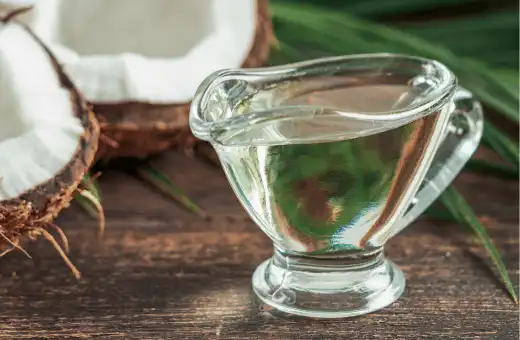
Another popular substitute is coconut oil. Coconut oil has a similar texture to shortening.
Ratio or measurement: It can be substituted in a 1:1 ratio.
t also has a delicious flavor that can add a unique taste to your baked goods.
3. Try Vegetable Oil in place of shortening
Vegetable oil is another option for substituting shortening.
Ratio or measurement: It has a different texture than shortening, so it is best to use it in a 3:4 ratio.
For example, if a recipe requires 1 cup of shortening, use 3/4 cup of vegetable oil instead.
4. Lard – similar taste, like shortening
Lard is another type of fat that can be used as a shortening substitute.
Ratio or measurement: It has a similar texture and can be alternated in a 1:1 proportion.
However, keep in mind that lard has a distinct flavor that may adjust the taste of your recipe.
5. Margarine – a great shortening alternative
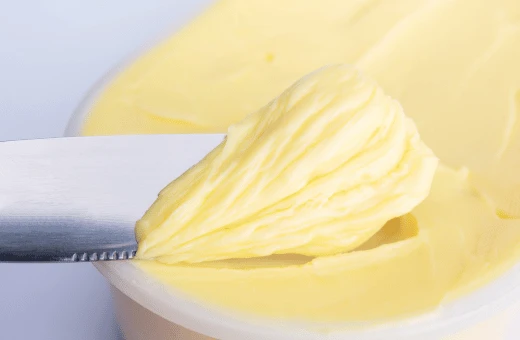
Margarine is another option for substituting shortening, but it is important to choose a brand that has high-fat content. It has a similar texture to shortening.
Ratio or measurement: It can be substituted in a 1:1 ratio.
6. Applesauce – similar taste, like shortening
Applesauce can be used as a healthy substitute for shortening.
Ratio or measurement: It can be substituted in a 1:1 ratio.
But it is important to keep in mind that it will alter the taste and texture of your finished product.
7. Use Yogurt instead of shortening
Yogurt can also be used as a substitute for shortening. It has a similar texture.
Ratio or measurement: It can be substituted in a 1:1 ratio.
However, it may alter the taste of your recipe, so it is best to use plain yogurt.
8. Sour Cream – similar taste like shortening
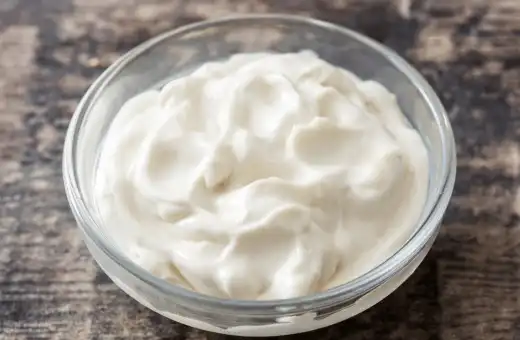
Sour cream is another option for substituting shortening. It has a similar texture.
Ratio or measurement: It can be substituted in a 1:1 ratio.
However, like yogurt, it may alter the taste of your recipe.
9. Nut Butter – a decent shortening replacement
Nut butter, like peanut or almond butter, can also be utilized as a substitute for shortening.
They have a unique taste that can add a delicious flavor to your baked goods.
Ratio or measurement: They can be substituted in a 1:1 ratio.
10. Avocado – similar taste, like shortening
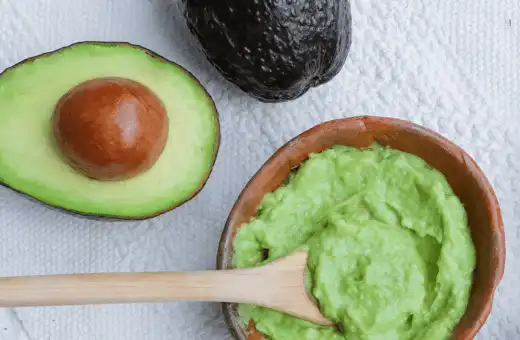
Lastly, avocado can be used as a healthy substitute for shortening.
Ratio or measurement: It can be substituted in a 1:1 ratio.
But it may alter the taste and texture of your finished product.
11. Cream cheese – an ideal shortening substitute
Using cream cheese as a shortening substitute results in a slightly tangy flavor.
It is perfect for baked goods like pastry and pie crust.
Ratio or measurement: Substitute the same amount of cream cheese for shortening.
But keep in mind that cream cheese has a higher water content than shortening, so adding flour to your recipe is ideal.
12. Greek Yogurt – similar taste like shortening
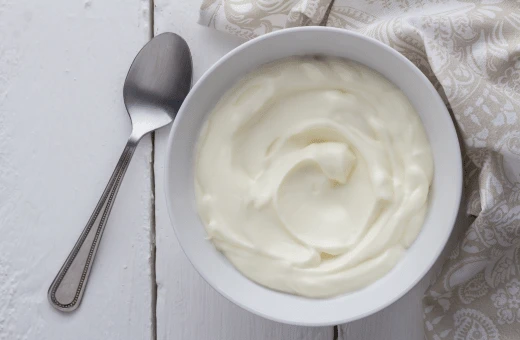
Greek yogurt is an excellent healthful alternative for shortening, providing a tangy flavor like cream cheese while also being low in fat.
Ratio or measurement: Replace shortening entirely with plain Greek yogurt at a 1:1 ratio.
Tips on How to Choose the Most Suitable substitution Option for shortening
When choosing a suitable substitution for shortening, consider the following tips:
1. Fat content: Shortening is 100% fat, so look for substitutes with similar fat content. Butter, margarine, or coconut oil can be used as alternatives, but keep in mind that they have different moisture levels.
Adjustments may be needed in the recipe to account for this.
2. Texture and consistency: Consider the texture and consistency that shortening provides in your recipe.
Shortening is known for creating flaky and tender baked goods. If you’re using it for baking, you’ll want a substitute that can achieve a similar level of tenderness and flakiness.
Butter or margarine can be good options for this.
3. Flavor profile: Shortening has a neutral flavor, so choose a substitute that won’t overpower the other ingredients.
Butter adds a rich and slightly savory flavor, while coconut oil can lend a subtle coconut taste.
If you prefer a flavorless substitute, look for non-hydrogenated vegetable shortening or other baking-specific alternatives.
4. Melting point: Shortening has a higher melting point than butter, which makes it useful in certain baking applications.
If your recipe requires a solid fat that maintains its structure at room temperature, choose a substitute with a similar melting point.
5. Allergies and dietary preferences: Consider any allergies or dietary restrictions. If you’re looking for a vegan or dairy-free alternative, coconut oil or non-hydrogenated vegetable shortening can work well.
Keep in mind that the flavor and texture may be slightly different.
Vegetable oil shortening vs. shorting- what’s the difference?
The main difference between vegetable oil shortening and regular shortening lies in their composition and properties:
1. Composition: Vegetable oil shortening is typically made from vegetable oils, such as soybean or palm oil, which are hydrogenated to create a solid fat.
On the other hand, regular shortening is typically made from hydrogenated vegetable oils and may contain other additives or emulsifiers.
2. Texture and consistency: Vegetable oil shortening tends to have a softer and creamier texture compared to regular shortening, which is firmer and more solid.
This difference in texture can affect the results in certain baking applications, such as creating flaky pie crusts or tender cookies.
3. Melting point: Vegetable oil shortening has a lower melting point compared to regular shortening.
This means that it melts at a lower temperature, which can result in softer baked goods and may affect the stability of certain recipes that require solid fat.
4. Flavor: Vegetable oil shortening typically has a milder flavor compared to regular shortening, which has a more pronounced neutral or slightly “greasy” taste.
The flavor of regular shortening can sometimes be detected in baked goods, while vegetable oil shortening tends to have a more neutral taste.
shortening substitute for buttercream frosting
Buttercream frosting is a classic choice for covering cakes and cupcakes. Its rich, creamy, and sweet flavor make it the perfect companion for many desserts.
However, if you’re looking to cut back on calories or fat in your baking, there are several buttercream frosting substitutes available that deliver the same delicious results with fewer calories and less fat.
One popular alternative is Greek yogurt cream cheese frosting. This option blends together Greek yogurt and cream cheese for a thick, creamy texture that slathers onto cakes with ease.
It still has the same sweetness as traditional buttercream frosting but without the added fat from butter. Additionally, Greek yogurt is packed with protein and probiotics to help support gut health.
Another convenient substitute is whipped topping frosting made with stabilized whipped cream and powdered sugar.
The addition of powdered sugar helps create a thicker consistency similar to a traditional buttercream frosting while keeping calories low since the whipped topping is almost entirely fat-free.
You can also customize the sweetness level by adjusting the amount of sugar you use so you don’t get an overly sugary result like some store-bought versions tend to have.
For those wanting a more traditional buttercream flavor without all the added fat, coconut oil-based buttercream frosting is another great option.
Coconut oil provides an intense richness while still being lower in saturated fat than real butter.
Plus, coconut oil’s subtle tropical flavor pairs perfectly with any cake or cupcake flavors you choose to use it on – from classic vanilla to zesty lemon!
Conclusion on Shortening Substitute
There you have it – 12 ideal shortening substitutes with ratios and how to use the alternatives.
Regardless of what you have on hand, you can always substitute shortening in your recipe with these handy alternatives.
Remember to follow the ratio mentioned and adjust your recipe accordingly, and always keep in mind that the substitution of shortening might affect your final product depending on the recipe.
So, next time you’re out of shortening, don’t panic; grab one of these alternatives and bake on.
FAQs on shortening substitute
Q1. What is similar to shortening?
Shortening is similar to butter, lard, margarine, and other vegetable-based spreads or tub products.
It is made from hydrogenated vegetable oils which are used to give the product a texture that is solid at room temperature.
Shortening has a higher melting point than many other fats and oils, making it ideal for baking desserts like pie crusts and cookies.
When shortening is combined with ingredients such as flour or sugar, it can help create a light and flaky pastry dough that won’t spread out when baked.
Q2. What can I substitute 1 cup of shortening with?
One cup of shortening can be substituted with 1 cup of butter, coconut oil, vegetable oil, or lard if you are looking for vegan options.
Butter and shortening both provide the same flaky texture when used in baking recipes like pie crusts, and the fats in these substitutes will create a golden color when cooked.
Coconut oil has a more elevated melting point than other vegan alternatives, which makes it ideal for baking tasks requiring a crisper texture.
Similarly, it can also help to reduce the spread of cookies when used instead of a liquid substitute.
Vegetable oil is best used as an alternative for recipes that don’t require a lot of structure but need some fat content.
Lastly, lard is great to use as a replacement in savory recipes like pastries and puff pastries as it provides a flakier texture than butter or shortening.
Q3. What can I use instead of shortening in baking?
Instead of using shortening in baking, you can use a variety of other alternatives.
Depending on the desired outcome of your recipe, one option is to substitute butter or margarine for shortening.
This will create a flaky, tender, and rich crust or pastry that is similar to what would be produced with shortening.
Another possibility is to use coconut oil or olive oil instead; this will produce a dense texture than with butter or margarine but still give you a tasty treat.
Additionally, some recipes call for applesauce as a shortening replacement, which will yield a cake-like baked good with an added hint of sweetness from the apples.
Lastly, if you are looking for something that has no animal products at all, vegetable oil works well as a vegan alternative for any baked goods recipe.
Q4. Can I Substitute Butter For Shortening?
Yes, you can alternate butter for shortening in baking recipes. Butter is a great substitute because it adds flavor to the final product.
It also creates a richer, more tender texture due to its higher fat content.
However, when using butter instead of shortening, you need to take into account that it has a lower melting point than shortening, so your baking time may have to be adjusted accordingly.
Additionally, if you are trying to create a flakier pastry or crust, you may want to consider cutting some of the butter with shortening, as the higher melting point of the shortening helps create layers in the dough.
Q5. How Much Oil Do I Substitute For Shortening?
When substituting shortening in a recipe, you should use an equal amount of oil. Depending on the type of oil used, it may add extra flavor or richness to your dish.
For example, using olive oil instead of shortening can give a dish an earthy flavor while adding healthy monounsaturated fats.
If you’re looking for a neutral flavor, use vegetable or canola oil.
Additionally, when substituting in baking recipes, bear in mind that the texture of the finished product may be slightly different than if you had used shortening.

